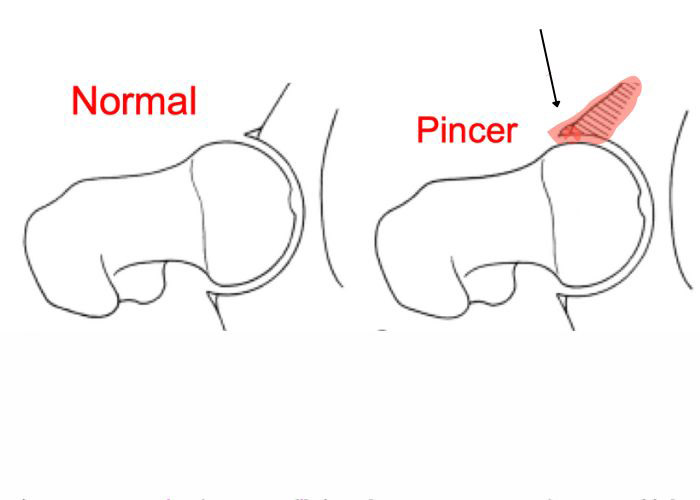Pincer Impingement | FAI Surgeon
FAI, or hip impingement, can be caused by a specific type of bone spur or even a misshapen bone in the hip. Pincer impingement can often be helped by a simple acetabuloplasy which removes or re-shapes the bone causing impingement. Selecting a surgeon with experience performing a acetabuloplasty is crucial to a positive outcome. Doctor Prem Ramkumar is located in Long Beach and serves patients in Los Angeles, Orange County, and surrounding Southern California areas who need a femoroplasty. Contact Dr. Ramkumar’s team today!

What is an acetabuloplasty?
Acetabuloplasty is an arthroscopic procedure to correct a condition know as pincer impingement. Pincer impingement, also known as femoroacetabular impingement (FAI), occurs when the socket (acetabular) overgrows and covers too much of the femoral head. This occurs because the quadriceps muscles (rectus femoris) originates here and, when overworked, can deposit abnormal bone. This abnormal bone is laid down near a part of the pelvis known as the anterior inferior iliac spine, which creates a “subspine impingement.” As a result, there is limited joint motion and the labral cartilage becomes pinched. If conservative treatments fail to relieve pain, an acetabuloplasty may be necessary to remove the over-growth and restore normal hip function. This is usually done at the time of hip arthroscopy whereby the labrum is repaired and femoroplasty is also performed. Dr. Prem Ramkumar, acetabuloplasty surgeon, is located in Long Beach and serves patients in Los Angeles, Orange County, and surrounding Southern California areas.

Who is a candidate for an acetabuloplasty?
Patients who have been diagnosed with femoroacetabular impingement or FAI may have a specific type of impingement called subspine or pincer impingement. Dr. Ramkumar will recommend an acetabuloplasty when non-surgical treatments such as rest, activity modifications, and physical therapy for a subspine or pincer impingement fail to resolve symptoms. If you still suffer from groin or back pain, a locking or clicking hip pain, stiffness or restricted hip movement, and/or lower back pain, surgery may be the next option.
How is an acetabuloplasty performed?
Acetabuloplasy is typically performed as a minimally invasive technique called hip arthroscopy. During the procedure, Dr. Ramkumar makes several small incisions around the hip joint and inserts a small camera attached to an arthroscope. Images from the camera are displayed on a screen, so Dr. Ramkumar can assess and repair damage to the hip joint. Small, specialized instruments are used to trim excessive sections of bone that have formed on the acetabular. Any other tissue damage will also be repaired. If a patient also has a cam impingement, that will be repaired at the same time.
What is the recovery time from an acetabuloplasty?
The recovery time from any surgery varies from patient to patient. The patient’s age, overall health and if the impingement was extensive, are all factors of recovery time. The key to a successful recovery is to follow Dr. Ramkumar’s post-surgical instructions and to continue with physical therapy to restore strength and mobility to the hip joint. In general, after leaving the hospital you will use crutches for about a month. A full recovery from a hip arthroscopy involving acetabuloplasty usually takes about 6-8 weeks.

